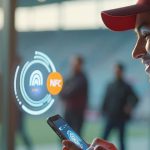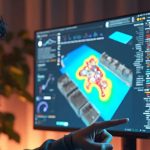The Scenario Today
In today’s era where the field of medical science and technology has made stupendous progress, primarily in the healthcare field, pandemics were indeed rare. However, the extremely extraordinary circumstances due to COVID-19 that we are in today definitely give us a message – loud and clear – that we need to be prepared and the “Prevention Is Better Than Cure”!
A retrospective view on how we could have been prepared in a better manner actually brings about some crucial questions we need to ask ourselves including:

Although these questions might seem a little more than obvious now as compared to then, what’s important for us today is to make sure that we address these questions for the future so that we are better prepared.
A Ray of Hope in Testing Times
With numerous trials still on at a global level for an effective vaccine against the COVID-19, currently, the well-tried and tested precautionary measures to prevent are Social Distancing and Maintaining Self-hygiene. In today’s almost digital world, it’d be fair to say that creating a “Zero Touch” experience would indeed be beneficial in achieving the above parameters while being comparatively easier to introduce – at times enforce if necessary – and implement. Mobile technology solutions actually give us a plethora of options and the swiftness required to implement and execute projects at a large scale to achieve the desired experience. Furthermore, ongoing research and enhancements in the technology sphere – including the ones below – are indeed ensuring these two precautionary measures could be effectively implemented at an organization and at a community level.

Touchless Access Control And Health Status Tracking
Facial recognition using a camera and a contactless temperature measurement using an infrared temperature sensor can be easily used to record the attendance of the employees along with their preliminary health check. An integrated AI bot can track the health data and provide suggestions to the employees on a mobile app, while an integrated blockchain network could be easily connected to the bot to track and store the data in real-time. An organization/community can use this data to carve out a heat map thereby depicting the overall health status on a dashboard. Various dashboards like these could be integrated into Mobile Apps which could be viewed by policymakers on their hand-held devices on the go, thus making decision-making much easier and efficient.
Blockchain-based Visitor Management System
Visitor access to enterprises could be easily transferred to Blockchain and BLE(Bluetooth Low Energy) based access management systems. The visitor/guest would receive an invitation through an app and upon accepting the invitation a unique access key would be generated and the transactions will be secured using Blockchain. Using the same access key and a BLE enabled device the visitor should be able to enter the office/society premise seamlessly. A distributed technology such as one using Blockchain not only provides a more secure way to implement access control systems but also it’s cheaper than a cloud-based back-end server-based implementation. Furthermore, Blockchain technology makes it easier to access and track the visitor’s health records – especially in regards to the COVID-19 scenario.
Maintaining Self-hygiene
Sensor-based automatic sanitizer dispensing units can be deployed at strategic locations across offices, housing societies, and public places. These IoT enabled units could be connected with a mobile app that could display the frequency of the usage of sanitizer, thus helping entities plan the sanitation quotient based on the data. Also, since there will be multiple such units deployed across the place, the refilling status could also be tracked effectively.
Virtual Queues and Pre-ordering at the Food Courts
Using the potential of mobile technology, apps can be developed to assist people to register themselves into virtual queues and access various other services offered at food courts across organizations – primarily in the IT and ITeS sectors. The apps could enable users to pre-order their food and block the available time slot. The serving could be based on the queue order. A digital twin of the food court can be created on to the cloud and using proximity sensors and cameras the food court occupancy can be detected and reported in real-time.
Touchless Access to Office and Public Transport
Through the use of data over sound technology, the entrance to the office/public transport can be made completely secure and seamless. A secure mechanism for transferring data over sound can be established and the same can be used to authorize the users to access the office/public transportation services. The creation of organization-specific apps could help notify the availability and display real-time status of vehicles to avoid crowding at pick-up/drop-off zones.
Optimal Use Of Meeting Rooms
Use of Digital Twin technology to create smart workplaces where constraints can be put on the occupancy of the meeting rooms to ensure effective social distancing. Also, this approach would ensure the meeting rooms are being optimally utilized at all times.
Carving Out An Effective Work From Home Strategy
COVID-19 has actually displayed the importance of work from home facilities for the employees. Many organizations had already embraced this as a part of their work culture including flexible work timings. Large organizations, however, should be able to make working from home for their employees completely seamless. With companies like TCS leading from the front – planning to have 75% of their workforce work from home permanently by 2025 – others would follow suit sooner or later.
While this aspect means a lot of savings in terms of the establishment and operational costs of the physical offices, it also brings up the challenge to ensure the productivity and efficiency of the workforce working remotely, apart from data privacy and security being an important aspect. The organizational policies have to be in tandem with the standardized rules as set up by common governing bodies. The same would be applicable to the customers as well. This would also eliminate the need of the physical ODC(Offshore Development Centers) completely.
An enterprise mobility solution to provide the employees an ability to request for work from home and interact with a virtual assistant for addressing any queries on the go. On the mobile devices as well as the laptops, organizational policies could be applied which will ensure device tracking and data security along with an efficient working environment. Using smart and intelligent AR, VR and MR solutions, organizations would definitely be able to impart training, real-time tracking as well as virtual in-presence scenarios with different stakeholders.
In Conclusion
People’s health is paramount and with today’s COVID-19 situation, it has become more important than ever to ensure and enforce health safety measures at an individual, community, and national levels. Mobility and Digitization are the two key aspects that would help to achieve this goal at a much faster pace than ever before with technology such as Blockchain, IoT, AI bots, and AR/VR/XR. These solutions help the organization in running a business effectively and communities and public places in maintaining personal hygiene.
To throw light on such initiatives and how mobile technology could positively impact situations like the COVID-19 in general, Globant, a leader in Digital Transformation, is introducing MobileNXT 2020 – a platform to inform, discuss and learn the “Xpress Trends” in the Mobile Technology sphere. Click on https://mobilenxt.globant.com/ to know more.




